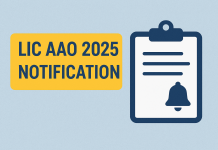Balwantrai Mehta Committee, 1957
The Balwantrai Mehta Committee established in 1957 to investigate the issues of democratic decentralization in post-independence India. The Committee was required to record and review the Community Development Programme (CDP). The Committee also made substantial suggestions for the Program. It highlighted how and why the community development program had been unsuccessful in the past because it failed to arouse local interest and participation from people. Without local initiative, the development of rural areas would not be possible. The recommendations of the Balwantrai Mehta Committee came into effect on 1st April 1958. The committee laid down five fundamental principles:
- There should be three tier structures of local self-government bodies from village to the district level and these bodies should be linked together.
- There should be genuine transfer of power and responsibility to these bodies to enable them to discharge their responsibility.
- Adequate resources should be transferred to these bodies to enable them to discharge their responsibilities.
- All welfare and developmental schemes and programmes at all three levels should be channelled through these bodies, and
- The three-tier system should facilitate further devolution and disposal of power and responsibility in future. The committee envisaged three tier system of Panchayats known as Zilla Parishad, Panchayat Samiti and Gram Panchayat and recommended encouragement of peoples’ participation in community work, promotion of agriculture and animal husbandry, promoting the welfare of the weaker sections and women through the Panchayats.
Ashok Mehta Committee, 1977
In December 1977, the Janata Government appointed a committee on Panchayati Raj institutions under the chairmanship of Shri Ashok Mehta. It submitted its report in August 1978 and made 132 recommendations to revive and strengthen the declining Panchayati Raj System in the country. Its main recommendations are:
- A two-tier system, that is, Zila Parishad at the district level, and below it, the Mandal Panchayat consisting of a group of villages having a population of between 15 to 20 thousand people each.
- Reservation of seats for the weaker sections
- 2 seats reserved for women
- Zila Parishad should be the executive body and made responsible for planning at the district level.
- Adequate financial resources for the Panchayat.
L.M. Singhvi Committee, 1986
L.M. Singhvi Committee was constituted in 1986 to study the problems faced by Panchayati Raj Institutions by the Rajiv Gandhi government. The Gram Sabha was considered as the base of a decentralized democracy. The Panchayati Raj Institutions were are viewed as institutions of self-governance which would actually facilitate the participation of the people in the process of planning and development. It recommended that:
- Local self-government should be constitutionally recognised, protected and preserved by the inclusion of a new chapter in the Constitution
- Non-involvement of political parties in Panchayat elections.
- More financial resources for Village Panchayats
- Constitutional recognition to the Panchayati Raj institutions.
- For it, a new chapter should be added to the Constitution of India.
- Constitutional provisions to ensure regular, free and fair elections to the Panchayati Raj bodies.
- Nyaya Panchayats should be created for a group of villages.
73rd Constitutional Amendment Act of 1992
The Constitution (73rd Amendment) Act, 1992 has added a new part IX consisting of 16 Articles and the Eleventh Schedule to the Constitution. The 73th Amendment envisages the Gram Sabha as the foundation of the Panchayat Raj System to perform functions and powers entrusted to it by the State Legislatures.















